Volvo Dashboard Warning Lights and Symbols
Is there a warning light displayed on your Volvo dashboard? Learn the warning light’s meaning and possible solutions to fix the problem by reading the list below. This guide will explain Volvo Dashboard Warning Lights and Symbols.
|
|
If the ABS warning light illuminates while the engine is running, the system is malfunctioning. If it is not working properly, the brake system operates without using ABS. The ABS prevents the brakes from locking up during hard braking. Take caution not to brake too hard while the ABS system is malfunctioning. Use an ABS scanner to diagnose problems with the system. Common ABS faults:
|
|
|
The service engine soon lamp means a fault has occurred in one of the various vehicle systems. It will only turn on when a vehicle has recognized there is a significant enough problem that it needs to be serviced. A code will be stored within the vehicle’s computer to give more detail on the problem at hand. Follow this guide to scan the vehicle’s computer for trouble codes to see why the check engine light has turned on. If the light is steady, it is normally okay to drive for the time being. Do NOT drive the vehicle if the check engine malfunction indicator light (MIL) is blinking. This is usually a sign of misfire and, oftentimes catalytic converter failure, which can lead to massive engine failure if driven. Common causes of the service engine soon indicator:
|
|
|
When the vehicle is first turned on, this warning light will illuminate for approximately seven seconds. If the light stays on while the engine runs, the vehicle’s safety restraint system needs to be serviced. Proceed with caution when diagnosing this yourself as airbags can involuntarily deploy/discharge, causing injury or even death. Use an Airbag OBD-II Scanner to read the diagnostic trouble codes. It is important to have the airbags working properly in case of an accident. |
|
The tire pressure monitor indicator means low tire pressure in one of your vehicle’s tires. Check the vehicle’s information display for which position the tire is in that is low. Fill the tire to correct air pressure and drive a few miles, and the light will turn off on its own. If the light stays on, it may be caused by a faulty TPMS sensor in one of the tires. Service the TPMS system, a TPMS relearn tool will be needed. Common TPMS faults:
|
|
|
If the battery warning light comes on while the engine is running, it indicates the charging system is not functioning properly. Turn off the engine and check the generator (alternator) belt is in working condition. Do not continue driving if the belt is loose, broken, or missing. Test the charging system with a battery load and cranking system tester. Common causes of the charging system light:
|
|
|
This light means that the fluid in the windshield washer reservoir is low. Refer to the owner’s manual for the location of the reservoir. Alternatively, you can look under the hood for a blue cap with the same symbol. Check its level and fill it appropriately. |
|
|
This light means the vehicle is close to having an empty fuel tank. Some vehicles will display the approximate amount of miles the vehicle can still be driven before it will completely run out of fuel. It is always wise to fill up on gas without running it too low, as this causes the fuel pump to work even harder when it’s low and can lead to premature failure. |
|
|
|
This light warns of low engine oil pressure. It is an indicator of insufficient oil pressure through the oil passages and the main bearings of the engine. It is possible the engine oil level is low. Pull the vehicle over, shut off the engine, and check the engine oil. If the level is low, fill to a normal level and drive the vehicle to see if the light goes off. If the light stays on, have the vehicle towed to a shop; driving with low oil pressure can lead to immediate and serious damage to the engine. Common causes of the oil warning light:
|
|
The brake light on means the brake system needs to be serviced. We do not recommend driving the vehicle with the brake light on. Use your best judgment to determine if the vehicle is safe to drive. Check the brake fluid level. If in need of repairs, have the vehicle towed to the shop; driving in this condition could be dangerous. Common causes of the brake indicator light:
|
|
|
|
The vehicle will adjust engine and transmission performance in economy mode for the best fuel economy. For example, engine RPMs don’t reach high values, and transmission may shift earlier. These adjustments help keep fuel consumption down. |
|
This light means the high beams are turned on. You should only use this setting if you are the only vehicle on the road. Do not keep the high beams on if you are coming in the opposite direction or other vehicles in front of your vehicle. To turn off the high beam, pull the turn switch towards the back of the vehicle. |
|
|
|
This light means that lane assist is enabled. This light should flash if you leave the lane without turning on the blinker. The steering will be adjusted to keep the vehicle in the center of the driving lane. If the steering will is turned by the driver, it will cancel the adjustment, and the driver will regain control. |
|
|
This light means that the stability control has been disabled. The vehicle can be driven but keep in mind stability control is off. In most cases, this light comes on at the same time that the ABS light comes on. If that is the case, there is a high chance one of the wheel speed sensors is faulty. Use an ABS Scanner to read the fault codes from the ABS and traction modules. |
|
The turn signal indicator turns on and flashes when the turn signal switch indicates the driver turning left or right. Push the turn signal stalk up or down to turn on the turn signal indicator. If the lamp flashes rapidly, it is a sign of a bad bulb. Common turn signal indicator issues:
|
|
|
This light means that one of the doors is open or is not closed completely. Pull over, park the vehicle and check to ensure all the doors are fully closed. If all entry points are closed properly, there may be a problem with the latches or sensors. |
|
|
This lamp means the parking lights have been turned on. Typically the low beam switch controls the parking lights. Turn the switch one more click to turn on the low beams, or turn the opposite way to turn all lights off. |
|
|
This is a reminder to fasten the front driver or passenger’s seatbelt. An audible chime will repeat while the vehicle is in motion, and the seatbelt is unfastened. Fasten any passenger’s seatbelts for the warning to go off. If a warning still happens, there is a malfunction. Common seat belt warning malfunctions:
|
|
|
This indicator comes on when the Electronic Stability Control (ESC) is off. It is either off due to malfunction or was manually turned off. It is always recommended to have ESC on to keep the vehicle from slipping and losing control in hazardous situations. It can usually be turned on and off within the information display or by a button on the dash. If the light stays on constantly and traction control can not be turned on, the system has been turned off due to a problem with this system or ABS. Use an ABS scanner to diagnose the system. |
|
|
|
The green fog lamp indicator pointing to the left means the front fog lights are turned on. The amber fog lamp indicator pointing to the right means the rear fog lights are turned on. These lamps can disable the headlamp dial/switch. Either turn or press the switch, depending on the model, to turn off the fog lamps. |
|
This light means that cruise control has been enabled. The vehicle will keep a constant speed. Cruise control will turn off if you press the brakes. Note that in this case, there is no adaptive cruise control. The vehicle will not keep a safe distance from the vehicle in front. |
|
|
This light indicates the parking brake is on. It can illuminate either red or yellow in color. If the parking brake is off, this light indicates the parking brake system needs to be serviced. Common causes of the electronic park brake indicator light on a Nissan vehicle:
|
|
|
This light is an indicator of the automatic brake hold system working properly when certain conditions, such as stop-and-go traffic are met. When it is green, the brake hold is applied. When it is white, the system is on stand-by. |
|
|
The security indicator will blink every three seconds when the vehicle ignition is in OFF, LOCK, or the AUTO ACC position and if all the entry points are locked properly. If it does not flash while the vehicle is locked and entry points are sealed, the system is not working. If the light stays solid, the vehicle has been immobilized and will not start or move. |
|
|
|
The attention indicator means there is a common fault happening. Check the dash for a message detailing the problem. This message will appear on the information display every time the ignition is turned on. Fix the problem causing the error for the attention indicator to go off. Common causes of the attention indicator:
|
|
The transmission fault indicator means there is a problem with the automatic transmission. This light will show on the information display and will include a message. Check the message for more information on this fault. An OBDII scan tool will be needed to read the ECU for automatic transmission trouble codes. Diagnose and repair the transmission to get rid of the transmission fault indicator. |
|
|
The all-wheel-drive fault indicator means the all-wheel-drive (AWD) needs to be serviced. The AWD has a fault and will show up on the information display along with a message with more information. Use an OBDII scan tool to read the diagnostic trouble codes from the AWD module. This will help determine what problem is occurring with the AWD system. |
|
|
This light means the gas cap was not tightened or left off. Check the gas cap to see if it’s properly tightened, and drive the vehicle an ignition cycle to see if the light goes off. If the gas was overfilled, it is also possible it sets this off until the gas has had time to evaporate from the charcoal canister. |
|
|
The auto start-stop indicator means the vehicle’s engine will turn off when the vehicle comes to a complete stop. When the accelerator is pushed, the vehicle will automatically start again. This light will go off when the auto start-stop is turned off. This feature is used to decrease fuel consumption and engine idle hours. |
|
|
This light means that a vehicle in front has been detected within a distance closer than the set interval. This is a feature of pilot assist; if a possible collision is detected from approaching a vehicle too fast, the vehicle will slow down and start braking. The vehicle-detected lamp will illuminate, and an audible warning will be heard. |
|
|
This light illuminates when the rain sensor is on. With the rain sensor on, any time rainwater is detected on the windshield, the wiper blades will turn on automatically. Turn off the rain sensor by pressing the button on the windshield wiper stalk. The light will turn off also. |
|
|
The DSTC sport mode means that the vehicle is in a driving mode that offers a more active feel. The stability control is still on but offers more slip and lateral wheel movement. If a large amount of slip is detected, stability control will still come one. Sport mode also offers faster throttle response, transmission shifts, and suspension feel to feel sportier and offer a different driving experience. |
|
|
The frost warning indicator means the outside temperature below the temperature at which frost forms on roads. This is a warning to drive with caution. Driving in extreme conditions such as icy roads is dangerous. |
|
|
The preconditioning indicator means the vehicle is warmed or cooled to the ideal climate set by the user. This can be activated remotely to warm up or cool the car before driving. The vehicle will maintain this set climate once it is reached. The settings for it can be changed within the information display. Preconditioning can also be started by tapping the icon on the climate control. |
|
|
This light means that the high beams will turn on automatically when there is no incoming traffic. The active high beam switch needs to be on, and the high beams turned on on the stalk for the automatic high beams to work. |
|
|
The active bending lights malfunction means the headlamp’s automatic bending function is not working. This function is used to keep the lights in front of the vehicle on the road while cornering. The lights bend to the road as the steering is turned. The lights will function as normal in a straight path with this malfunction. The system will need to be serviced to fix this problem and to turn off this indicator lamp. |
Many of these lights on a Volvo are meant to inform the driver when a system is enabled or disabled. A few of these lights indicate a problem or malfunction and inform the driver that that system has been disabled.

To find out what is wrong with these systems, use an All System Volvo Scanner to read the fault codes from the corresponding module. Note that generic OBD-II scanners can only read check engine codes and cannot diagnose other systems such as airbags, ABS, traction control, etc.
We hope you find the Volvo Dashboard Warning Lights and Symbols guide helpful. Check these troubleshooting and repair guides for more help on your Volvo.

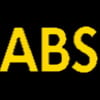
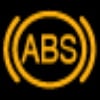 Anti-Lock Brake System Fault Indicator
Anti-Lock Brake System Fault Indicator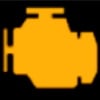

 Check Engine Light / Service Engine Soon
Check Engine Light / Service Engine Soon 
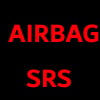 Air Bag Warning Light
Air Bag Warning Light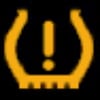 Tire Pressure Monitor Indicator
Tire Pressure Monitor Indicator Charge System Trouble Indicator
Charge System Trouble Indicator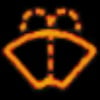 Low Washer Fluid Indicator
Low Washer Fluid Indicator Low Fuel Indicator
Low Fuel Indicator Oil Warning Light
Oil Warning Light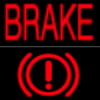
 Brake Light
Brake Light Economy Mode Operation Indicator
Economy Mode Operation Indicator High Beam Indicator
High Beam Indicator Lane Keeping Indicator
Lane Keeping Indicator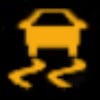
 Stability Control Indicator
Stability Control Indicator Turn Signal Indicator
Turn Signal Indicator
 Door, Trunk Ajar Indicator
Door, Trunk Ajar Indicator Park Lamps ON Indicator
Park Lamps ON Indicator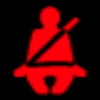 Seat Belt Reminder
Seat Belt Reminder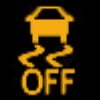 Stability Control OFF Indicator
Stability Control OFF Indicator
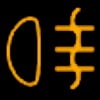 Fog Lamp Indicator
Fog Lamp Indicator Cruise Control Indicator
Cruise Control Indicator

 Park Brake Indicator
Park Brake Indicator Auto Brake ON Indicator
Auto Brake ON Indicator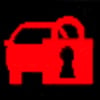 Security Indicator
Security Indicator

 Attention Indicator
Attention Indicator Transmission Fault Indicator
Transmission Fault Indicator All Wheel Drive Fault Indicator
All Wheel Drive Fault Indicator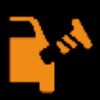 Loose Gas Cap Indicator
Loose Gas Cap Indicator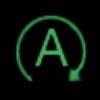 Auto Start-Stop System Indicator
Auto Start-Stop System Indicator Vehicle Detected Ahead Pilot Assist
Vehicle Detected Ahead Pilot Assist Rain Sensor Indicator
Rain Sensor Indicator Sport Mode Indicator
Sport Mode Indicator Frost Warning Indicator
Frost Warning Indicator Preconditioning Indicator
Preconditioning Indicator Active High Beam Indicator
Active High Beam Indicator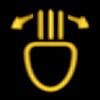 Active Bending Lights Malfunction Indicator
Active Bending Lights Malfunction Indicator


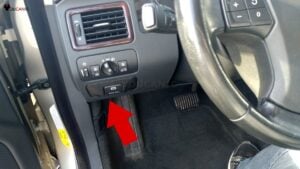

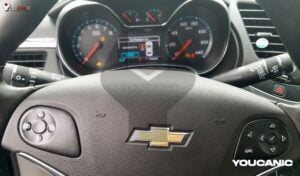
my symbol wasn’t listed. red circle with small fan in center. indicator is flashing intermittently